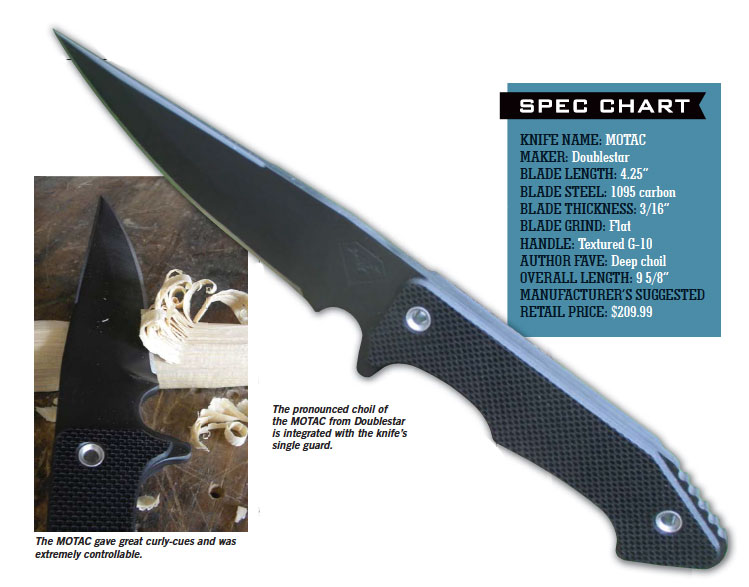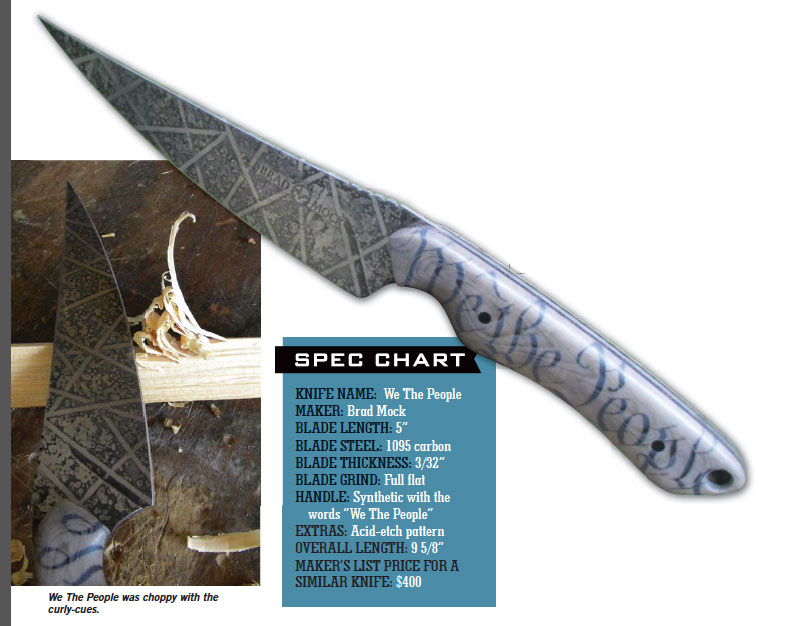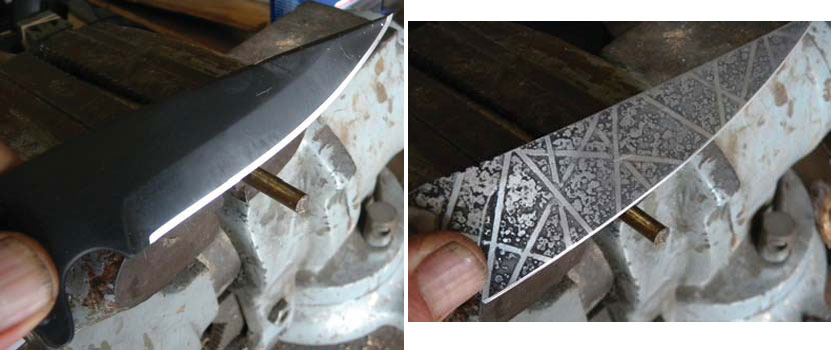- Hydrate
- Limit Heat Exposure
- Dress Appropriately
- Sweat the Load
- Divide the Labor
Like most forgers, I try to build a stockpile of damascus and different sized blades in the winter months when the temperature is below 50 degrees F. Sometimes, because of where you live, it might not drop below 70 degrees F. Hot is hot no matter where you forge, and there will be a time when you have to forge no matter how high the temperature is.
Here are some helpful hints to get you through the hot times.
Hydrate
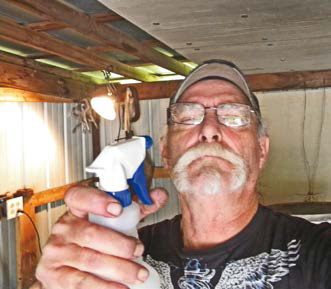
“Pre-hydrate” the day before you are going to forge. Also, drink plenty of water during forging and afterward. I use a squirt bottle to spray myself during forging to add extra cooling. Staying hydrated should keep those nasty headaches away.
Limit Heat Exposure
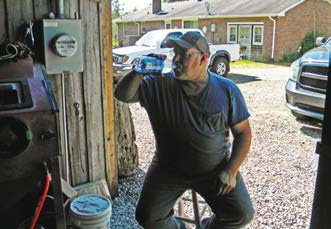
If you are lucky enough to have a second person that knows how to forge helping you, take turns doing the work. This limits the amount of time one person has to stand by the hot forge. After your turn, get away from the heat and drink fluids.
Usually I’ll pull a chair close to the door to catch any breeze that might be blowing. I place a fan to blow across the cooling chair if the temperature’s above 90 degrees F. Some have a gas forge that can be moved outside, which is better for the radiating heat, though a strong wind can mess with the fire.
The main point here is to limit the time you are exposed to the forge heat.
Dress Appropriately
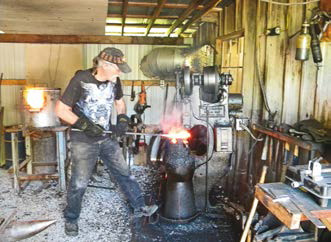
I do away with such coverings as aprons, arm covers and/or long sleeves. I haven’t gone to shorts because there would be a piece of hot something rolling down my leg and into my work boots. No amount of stomping around gets it out. I stick with jeans.
Sweat the Load
A towel or rag that helps keep the sweat from getting in your eyes is a good idea. Your shirt will be soaking wet after a few minutes, so don’t count on it as a sweat sponge.
Divide the Labor
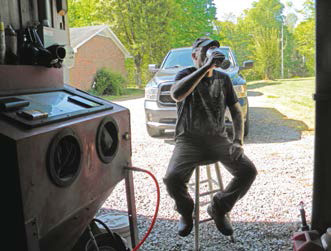
When welding damascus on very hot days, one day I do just the first weld to seal the billet. Then the next day, I stretch the billet. The following day, I cut and restack the billet for layer count.
I follow this pattern till I have the billet the way I want it. This takes a lot longer but it doesn’t wear you out at the end of the day.
Then again, sometimes I just work through the heat and sit in my truck with the air conditioning on high. An extra shirt also helps to keep sweat off your vehicle seat.
Keep on Forging
So remember: Drink fluids, limit your time being by the hot forge, stay as cool as possible—and keep forging!



